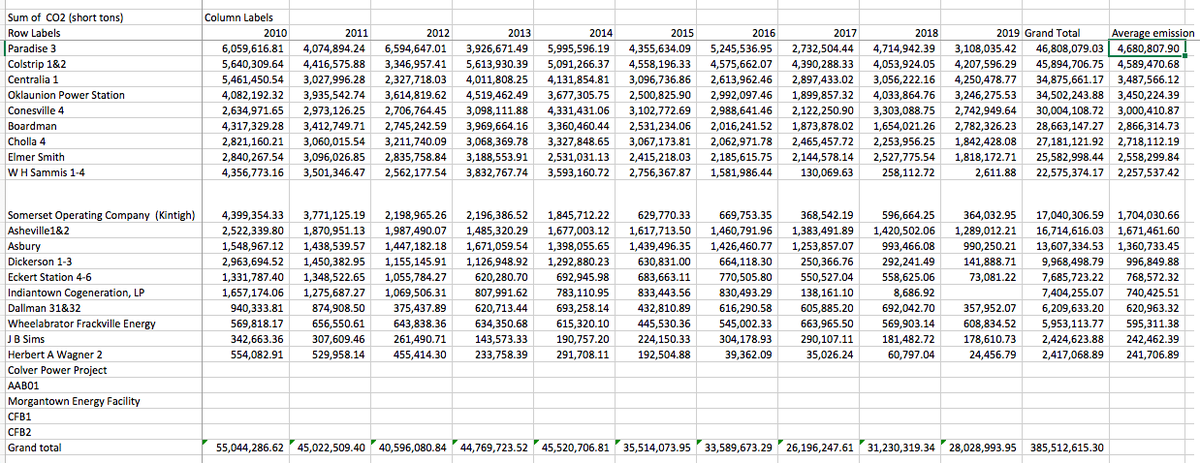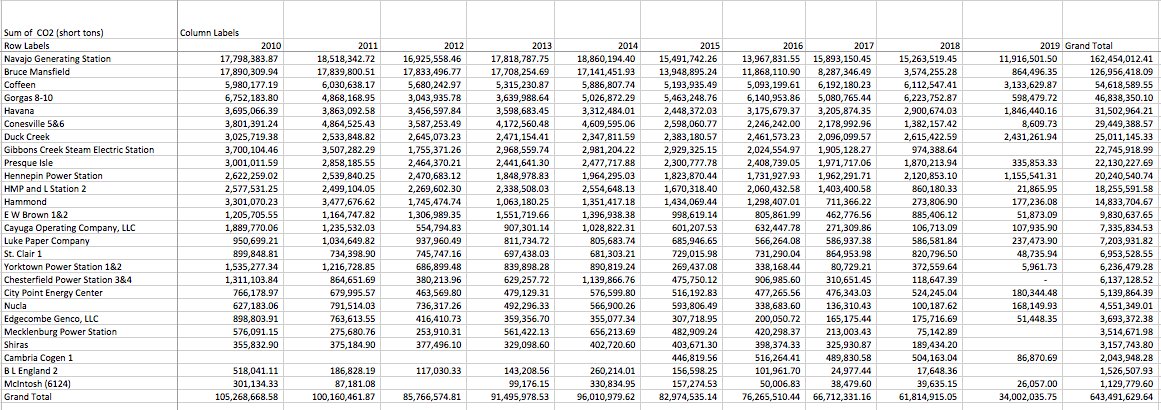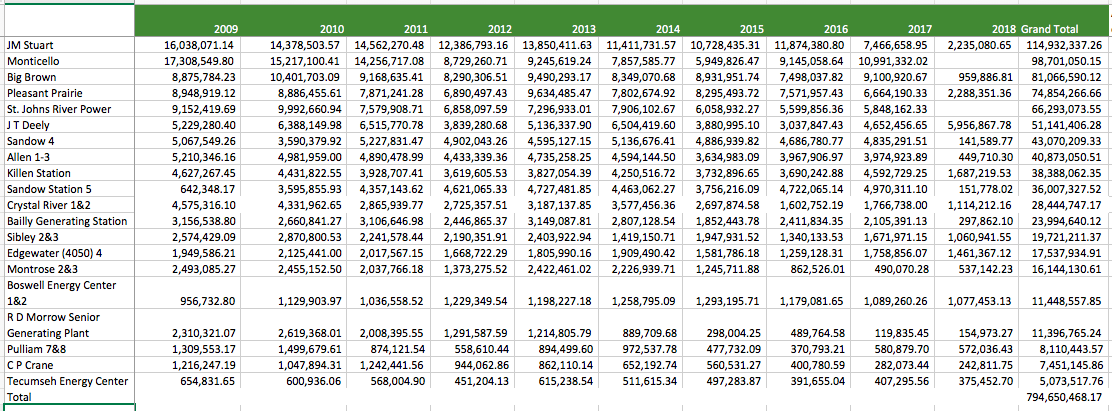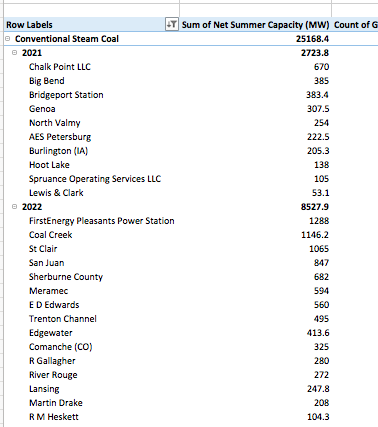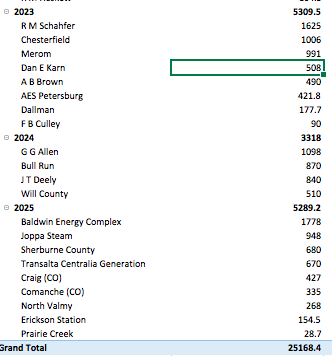Every year, I write an annual story about coal retirements. Usually, these stories focus on coal capacity shut down. But capacity doesn't necessarily reflect the emissions impact.
So this year, I wrote about the emissions of the plants that closed. https://www.eenews.net/stories/1063720241
So this year, I wrote about the emissions of the plants that closed. https://www.eenews.net/stories/1063720241
This year's numbers are really interesting. What we see is that this was a relatively big year for capacity retirements (9.4GW of net summer capacity), but not an especially big year for emissions.
The reason for this is relatively simple: None of the units closed this year were especially big. That is a change from the last two years which saw some of the largest coal plants in America close.
So let's dig into the numbers here. A couple quick notes. I measures cumulative emissions for the decade because annual figures can fluctuate based on weather, the economy and maintenance. Also, 2019 is the last complete year of EPA data.
You'll notice four of the top five emitters are partial shutdowns, or units at larger plants.
In the case of Paradise, the shutdown of Unit 3 marks the end for one of the largest plants in the country. The other two shutdown in 2017.
In the case of Paradise, the shutdown of Unit 3 marks the end for one of the largest plants in the country. The other two shutdown in 2017.
But in the case of Colstrip and Centralia, these closures are the beginning of the shutdown process. Other units will continue to run. In Colstrip in particular, those are real big emitters.
These partial shutdowns are interesting. They are a boon for emissions. But it's important to note that cumulative emissions are what matters for climate. So while reduced emissions is good, units that continue to belch CO2 are problematic from a climate standpoint.
Deleted the 2019 and 2018 screenshots because I didn't get all the years. Trying again.
First is 2019. Second is 2018.
First is 2019. Second is 2018.
You'll notice just how big the emissions are from plants like NGS, Bruce Mansfield, JM Stuart, Monticello, Big Brown, Pleasant Prairie. These were some of the largest emitters in America.
Here's the thing: We see very few plants that are currently scheduled for retirement in the next five years that are average in excess of 10+ million tons of CO2 a year. We only see a couple that are even close to the 10+ threshold
Here's EIA's currently scheduled retirements.
Here's EIA's currently scheduled retirements.
When you look at this list, there are some names that pop out: San Juan, St. Clair, Chesterfield. These are all partial closures, and St. Clair and Chesterfield aren't huge emitters despite their large capacity numbers.
You also have the Xcel closures. Sherburne County is one of the largest emitters in a decade, but it is being closed gradually over the course of this decade.
Comanche 1&2 will close in the coming years, but Comanche 3 is new and by far the biggest emitter of the three.
Comanche 1&2 will close in the coming years, but Comanche 3 is new and by far the biggest emitter of the three.
By my count (I could be missing something) these are the plants slated to close that average 7.5+ million tons a year.
In sum, this raises some real big questions for U.S. climate policy. To-date, America has cut emissions by consuming less coal. But if these massive plants remain online, it is very difficult to see how the U.S. meets the emission targets called for in deep decarbonization models

 Read on Twitter
Read on Twitter